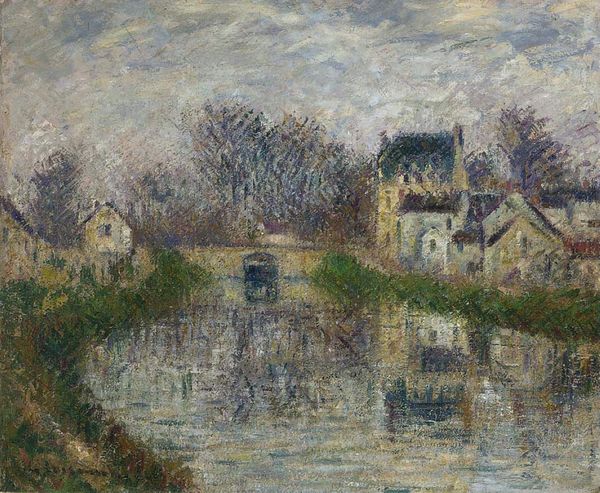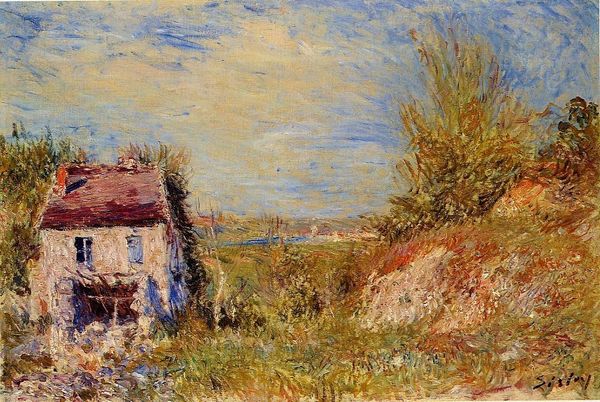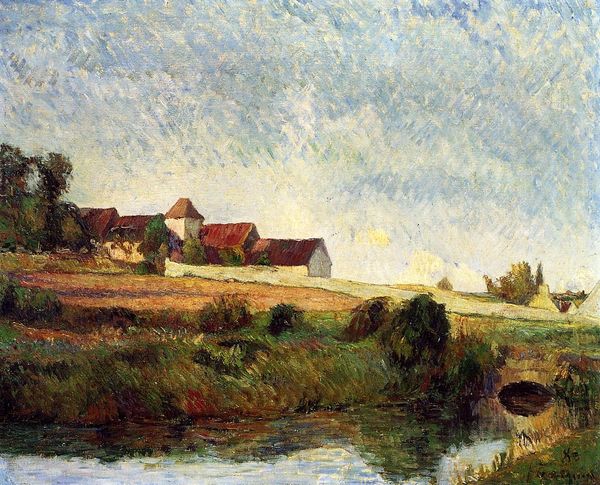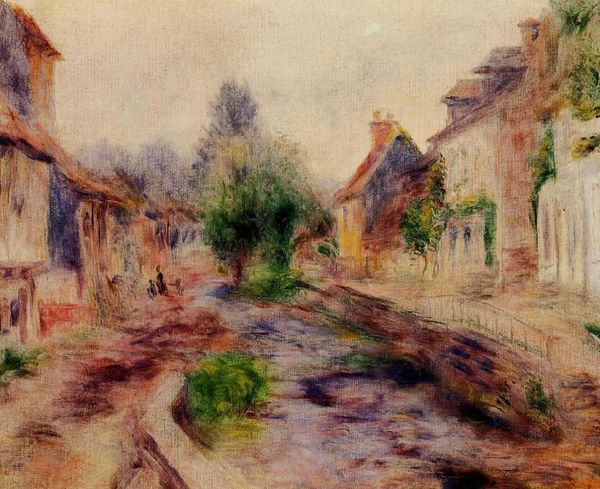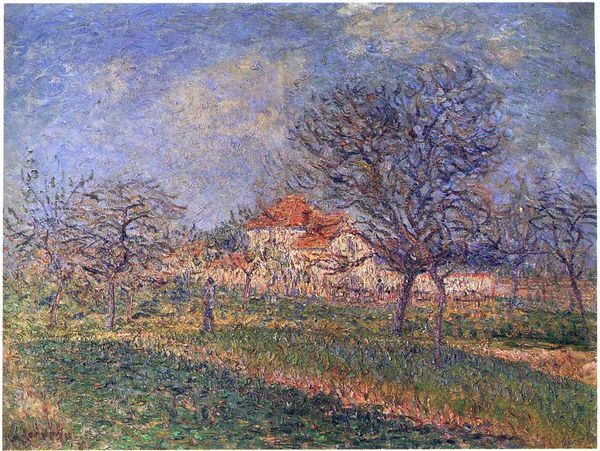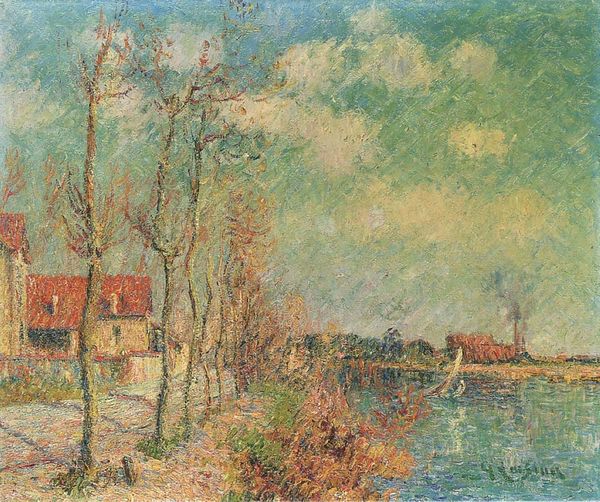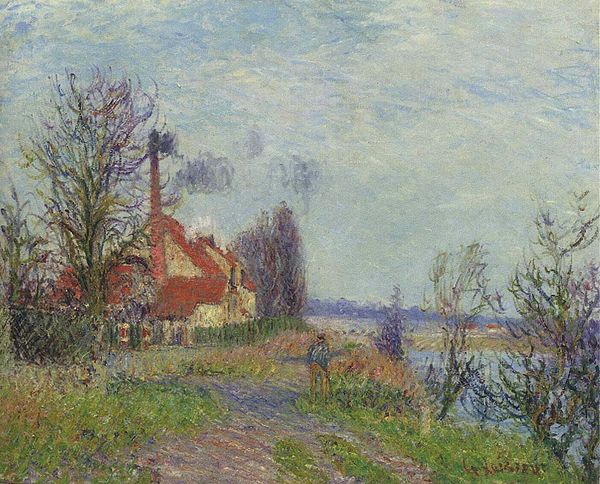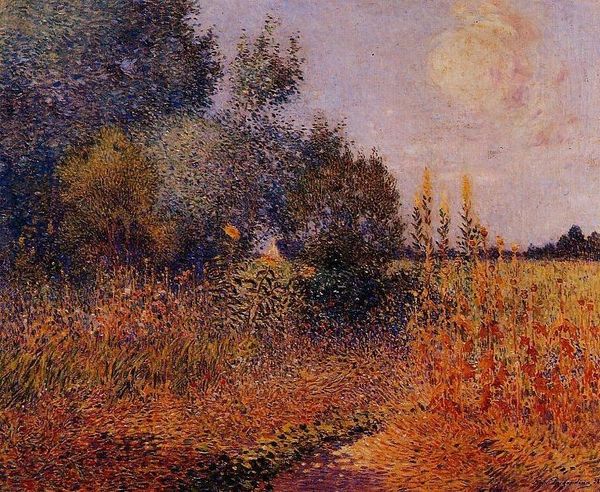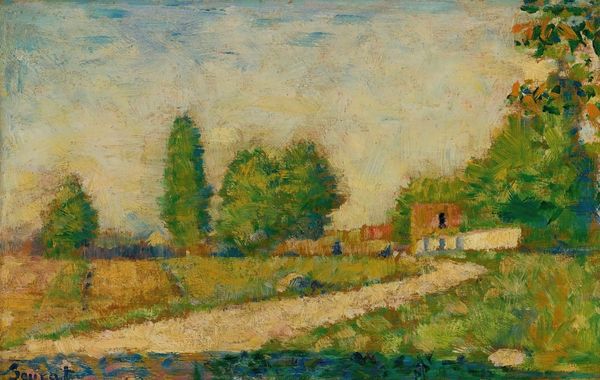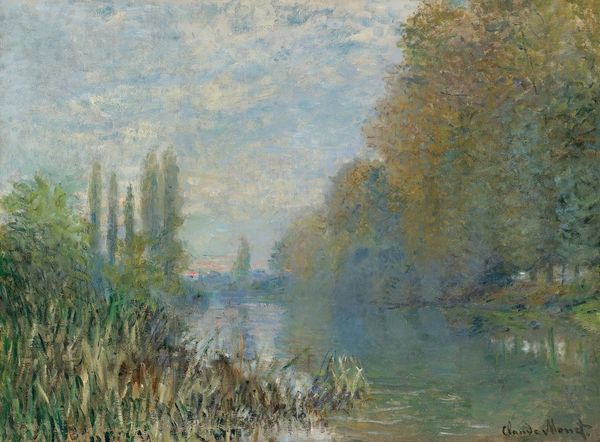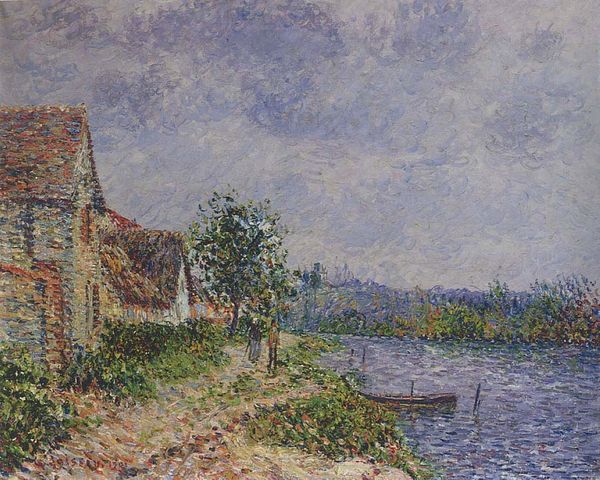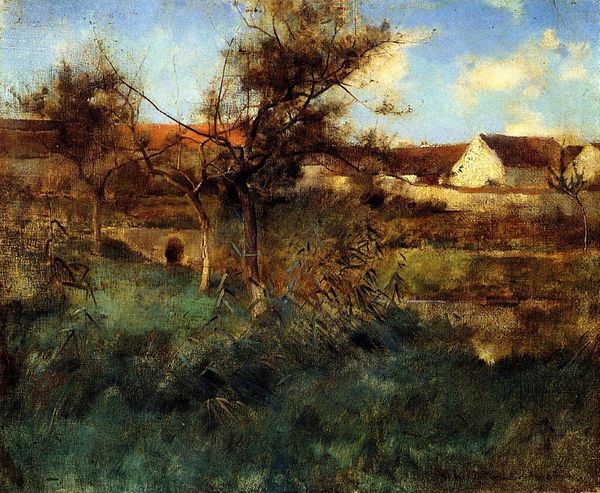
painting, plein-air, oil-paint
#
tree
#
painting
#
impressionism
#
plein-air
#
oil-paint
#
landscape
#
house
#
watercolor
#
realism
Dimensions: 38 x 46 cm
Copyright: Public domain
Editor: This is Alfred Sisley’s “Springtime Scene Morning,” painted in 1890. It feels almost…dreamlike, with the soft brushstrokes and muted colors. What’s striking to me is how the house seems almost to be emerging from the landscape. What do you see in this piece? Curator: I see a potent commentary on the relationship between humanity and nature. The Impressionists were often critiqued for their bourgeois sensibilities, depicting pleasant scenes without engaging in social critique. But consider Sisley's choice. The house, traditionally a symbol of stability and ownership, is here almost consumed by nature. Do you think this could reflect the anxieties of a rapidly industrializing society about its place within the natural world? Editor: That’s a perspective I hadn’t considered. I always just saw the Impressionists as trying to capture fleeting moments. But now I’m seeing it’s maybe about how nature reclaims space. Curator: Exactly. And remember, Sisley, like many Impressionists, struggled financially despite critical acclaim. The “pleasant” scenes were being painted by those who may not have been benefitting from this ideal. Did their personal history and views shape how they painted landscapes as much more than just 'pleasant'? Editor: So, this painting, in its depiction of nature and humanity, might also be quietly critiquing societal values of property and progress? Curator: Precisely. It prompts us to examine not only what's on the canvas but also the social and economic context surrounding its creation and reception, even to consider his cultural standing. Perhaps, through nature, Sisley found a space for resistance and critique. Editor: That's amazing! It really shifts my understanding of Impressionism and the power within what I had considered passive representations of nature.
Comments
No comments
Be the first to comment and join the conversation on the ultimate creative platform.
